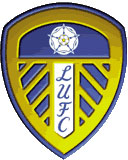 |
 |
 |
The Victorian gentlemen of London and the Home Counties laid many foundations
for the future during the second half of the Nineteenth Century. Among
their greatest achievements was to bring organisation and order They formed the Football Association in 1863, defined the first popularly
accepted rules of the game and invented the FA Cup. In a jealously guarded
amateur era for the game, the Corinthian spirit of these footballing pioneers
was a catalyst for an approach that the game badly needed to encourage
its progress. After the advent of shamateurism and then true professionalism, however,
the power base of the game shifted. The universities and schools of the
Home Counties became anachronisms and the focus fell instead on the industries
and working men of the North, with Lancashire clubs coming to prominence
and inspiring many young men to careers in the game, despite the many
financial restrictions still in place. The story was not so positive in the dark, satanic mills of Yorkshire.
Most of the public and potential players in the Broad Acres were more
interested in rugby or cricket; soccer was a game for toffs and a bit
of a Nancy Boy Southerner's pastime in the eyes of the typical, hard-bitten
Yorkshireman and early efforts by some pioneers to get a football scene
going had limited success. There were small oases of popularity and genuinely
pioneering spirit in places such as Sheffield, but for the most part,
Yorkshire was immune to the beauties of 'Socker'. Leeds in particular,
and West Yorkshire in general, were centres for cynicism and stereotypical
denunciation of the 'Southern jessies'. According to the Bantams Past
website, 'In the late 1800's working men began to discover leisure.
The Factory Act of 1850 stopped work in textile mills after 2pm on a Saturday.
The legislation was primarily aimed at restricting the working hours of
women and children, but adult males benefited, as it was uneconomic to
keep the mills open without the labour of women and children who formed
a large proportion of the workforce. By the early 1870s Bradford workers
were given all Saturday afternoon off, it allowed time for sports to be
played as an escape from the rigours of work. Cricket and rugby were the
main pastimes, in fact a good proportion of rugby clubs were formed by
members of cricket clubs who wished to have some sport in the winter months.
Although football - or the association game as it was known - had a toehold,
it was the oval ball game that ruled the roost once bat and pad had been
put into hibernation.' The menfolk of West Yorkshire had plenty of time and enthusiasm for sport,
but their preoccupation was cricket in the summer and rugby in the winter
months. Association football got barely a look in between these two preserves
and was frowned upon by the establishment. Yorkshire County Cricket Club
were formed on 8th January, 1863 at the Adelphi Hotel in Sheffield, while
the first record of a rugby club in Leeds dates back to 1864 when H I
Jenkinson placed an advert in the Leeds Mercury inviting players
to meet up at Woodhouse Moor a few days a week from 7 to 8am. That advert
attracted over 500 members. From this initial interest several clubs were
formed including Leeds St Johns who went on to become the professional
rugby league club based at Headingley, known today as Leeds Rhinos. There were those in the area who tried to promote the merits of soccer,
but they faced an uphill struggle to convince their fellows. The main
conurbations of the West Riding, Leeds and Bradford, lacked any professional
teams, in stark contrast to even small towns like Burton, Gainsborough
and Glossop, which could point to their own local football club. In fact,
Burton enjoyed the presence of two, United and Wanderers, both of whom
were in the Football League during the 1890's. Other towns and cities in Yorkshire were more receptive to the delights
of the association game, and Sheffield, in particular, was a beacon of
pioneering spirit. Sheffield FC are recognised as the oldest club in the
world, having been formed in 1857, and took part in the FA Cup for the
first time in 1874. The club failed to gain admittance to the London-based
Football Association when it was formed in 1863, because of irreconcilable
differences between the interpretation of the rules between the two, and
the Sheffield Football Association was formed as a consequence in 1867.
Sheffield Wednesday followed, initially styled simply The Wednesday, their
birth coinciding with that of the Sheffield FA. Wednesday lost 6-1 in the 1890 Cup Final to Blackburn, but came back
in 1896 to beat Wolves 2-1 and take the Cup back to Yorkshire for the
first time. Their two-goal match-winner that day was England international
Fred Spiksley, a left-winger who was to play a small part in the story
of Leeds City. Sheffield United were another major club from the area and became Yorkshire's
first League champions when they won the title in 1899. They also won
the Cup in 1898. Representatives from the Sheffield area strove to spread the gospel of
the new dribbling game among their neighbours and Martin Jarred and Malcolm Macdonald: 'It was arranged by Fred Sanderson,
president of the Sheffield Association, who took two teams from Sheffield
to play an exhibition match at Holbeck Recreation Ground on Boxing Day
1877. They turned up with all their kit, a ball, umpires and even a set
of posts, like missionaries spreading the soccer gospel. 'Despite a bitterly cold wind the game attracted a good crowd and the
Sheffield visitors reckoned they had covered their expenses - until they
discovered that most of the spectators were Holbeck Rugby Club season
ticket holders who had got in without playing. With so many rugby folk
at the ground it was not surprising that soccer was given a lukewarm reception
by people who "reckoned nowt to it".' Some areas within the city of Leeds did take to soccer - teams like Rothwell,
Oulton, Hunslet Wesleyans and Meanwood sprang up around 1880, and in 1885
Leeds FC were formed. The latter played its home games on the Star and
Garter ground at Kirkstall, but struggled to build a following. The club
disbanded in 1887, but another club by the same name was founded in 1888,
the year the Football League was formed, before again folding in 1890.
Another club, Leeds Albion was set up in 1888, but lasted only four years
before also fading into oblivion. It seemed soccer in Leeds was dead in
its tracks. Things started to pick up, however, as the end of the century drew near
and in February 1894 there were two significant events: the forming of
yet another Leeds AFC and, on the 26th of the month, the establishment
of the West Yorkshire League, which Leeds duly won by eight points that
first season. On January 29 1896, there came the first recorded instance of a serious
interest from the Huddersfield area in soccer. Sporting interests in the
town were represented at a meeting at the White Swan Hotel, Halifax, when
Messrs William Hirst and James Spittle assessed the continued growth of
the game in the region. On 12 February, at the Green Dragon Hotel, Leeds,
another meeting was held with the intention of applying to the Football
Association for permission to form a West Yorkshire Association. An all
Huddersfield board was elected to handle its affairs. Spittle, who presided
over the proceedings, was nominated as its divisional representative with
Hirst and Mr W H Shaw filling the posts of president and vice president
respectively. Leeds had to move around a bit in the club's early years, variously housing
themselves at Roundhay, Headingley (shared with the Rugby Club and next
door to the international cricket ground), Meanwood and Headingley again.
The club folded in 1898, when Headingley's owners, the Leeds Cricket,
Football and Athletic Club, asked them to increase attendances to pay
their way. Only three members of the football club turned up at its annual
meeting on 22 June 1898 to discuss the problem and the lack of interest
effectively sealed the club's fate. However, there was another set of challengers on the way. Sheffield-born Sam Gilbert, the cricket professional at Hunslet cricket
club, shared with many other of the Steel City's sons a desire to widen
the popularity of the new game, and acted as a kind of footballing missionary
to the West Riding. It was he who founded the first Hunslet Association
Football Club in 1878 and his enthusiasm and commitment kept the club
going for five challenging seasons, though regular fixtures were hard
to come by. The lack of local interest and money led to Hunslet AFC fading
away in 1883. Gilbert's vision of a successful club was given fresh impetus, however,
in 1889 when employees of Leeds Steelworks formed a club, eventually to
be rechristened as Hunslet FC when they joined the West Yorkshire League
in 1894. Hunslet, known locally as 'The Twinklers', became a formidable
outfit, The match came during a wonderful Cup run which saw Hunslet defeating
West Hartlepool, Loftus and Buxton to earn a home tie with Old Etonians
in the second round proper on 15 February 1896. There were few who gave
Hunslet any chance of progressing, and when they fell 2-0 behind within
seven minutes it looked like a heavy defeat would follow. However, the
Yorkshiremen fought back with an inspiring display to earn a shock 3-2
victory, one of the goals coming from 'Tipper' Heffron, a winger who went
on to play for Leeds City. Hunslet sadly lost to Darlington in the next
round and ended the season with a loss of £35, demonstrating the size
of the financial challenge facing football in Yorkshire. In 1897, Hunslet was among the leading local clubs which formed the Yorkshire
League. Leeds, Bradford, Huddersfield, Halifax, Mexborough, Barnsley St
Peter's, Doncaster Rovers Reserves, Sheffield United Reserves and Sheffield
Wednesday Reserves completed the line-up. That season saw Hunslet beat Leeds in a replay to win the Leeds Workpeople's
Hospital Cup. The original match had attracted 7,000 spectators. The same
month, Hunslet also secured the West Yorkshire Cup, beating Harrogate
with the only goal of the game before a crowd of 3,400. The attendances
gave some evidence of the increasing interest in association football
among the West Yorkshire public. As the new century dawned, Hunslet were the local game's leading force:
in 1900, they won the West Yorkshire Cup for the fourth successive year,
also winning the Leeds Workpeople's Hospital Cup for a fourth time. They
had a formidable team, good enough to hold mighty Blackburn Rovers to
a 1-1 draw on Easter Tuesday 1900. Amongst their ranks was Harold Lemoine,
who became one of the best goalkeepers in the country, going on to play
for Shepherd's Bush and Clapton and winning three amateur caps for England
between 1908 and 1910. As powerful an outfit as Hunslet were, however, they had no ground of
their own and were constantly in danger of going out of existence. They
had moved from the Wellington Ground in Low Road to the Laburnum Ground
at Parkside, only a narrow strip of land separating it from the Hunslet
Rugby Ground, and then on to their final home at the Nelson Ground in
Low Road. The club were all ready to join the reformed West Yorkshire
League in 1902, but lost the lease on their ground. They could not find
an alternative base in time and disbanded, with many of their supporters
vowing to raise the necessary capital to get a new club off the ground.
The men behind the club remained convinced that Leeds could sustain a
Football League club. Just round the turn of the century, some of the West Riding's rugby clubs
were in dire straits. A couple of them decided to call it a day, leading
to unexpected opportunities for association football in the area. Bradford's Manningham and Holbeck of Leeds were both disbanded, and their
descent into oblivion gave rise to the birth of the Bradford City and
Leeds City Football Clubs. In 1880, Manningham Rugby Club was formed after the Manningham Albion
Club was disbanded. They originally played at a field in Whetley Hill,
known as Carlisle Road, but in 1886 they relocated to Valley Parade, a
ground that was hacked out of a hillside over a few months. Manningham
were one of a number of leading clubs that formed the Northern Union in
1895 and a year later were the inaugural winners of the championship of
what became the Rugby League. However, the club fell upon hard times after
being relegated, and in 1903 only the successful staging of an archery
tournament kept the club going. At the same time a number of locals were doing their best to get an association
football club off the ground, with the Bradford Observer's sub-editor
James Whyte one of the driving forces. In March 1903, the committee of
Manningham Rugby Club indicated they were prepared to share Valley Parade
with a professional football team, with the two organisations playing
on alternate Saturdays. They later decided to suspend the activities of
the Rugby club for twelve months, paving the way for the newly established
Bradford City Football Club to successfully apply to join the Football
League that summer. According to the
Bantams Past website, 'A delegation travelled to London on 25th May
to apply for admission. The infant club was accepted with open arms and
the delegation returned to Bradford in triumph. At the Belle Vue public
house they celebrated what was described as 'the greatest football scoop
ever known'. City were the only side to have joined the League without
having played a single match! 'The fateful meeting was held in St Paul's Schoolroom, Manningham on
29 May. For two hours a furious debate raged. No one was deceived - this
was about making an irreversible decision to completely abandon rugby
in favour of - in the now famous words of Manningham President Alfred
Ayrton - "a game that would pay". Although a call for rugby
to be retained was 'met with great cheers', the adoption of professional
football was passed by 75 votes to 34. Bradford City was born.' Meanwhile, the demise of Holbeck Rugby Club in 1904 left their Elland
Road ground up for grabs. The availability of regular In 1896 Holbeck had joined the Northern Union (the forerunner of the
Rugby League), and enjoyed some decent facilities. Bentley's Brewery owned
a large plot of land at the foot of Beeston Hill on the main road to Elland.
It was known as the Old Peacock Ground, taking its name from a local pub,
the Peacock Inn, which stood opposite. This was the source of the Peacocks
nickname associated in the years to come with both Leeds City and United. Holbeck Rugby Club had originally played further down Elland Road at
Holbeck Recreation Ground, but in 1897 when the lease was not renewed,
Holbeck bought the Old Peacock Ground in 1897 for £1,100. Bentley's sold
on condition that it should remain as a football ground for seven years
and that they should hold the catering rights. Holbeck built a new stand
ready for the following season and the ground soon became popularly known
as Elland Road. The location was also used for association football, with
the first competitive soccer match seeing Hunslet beat Harrogate 1-0 to
win the West Yorkshire Cup on 23 April 1898. Leeds Woodville of the Leeds League shared the ground with Holbeck during
1902/03, but in 1904 Holbeck folded after losing a play off against St
Helens for the honour of a place in division one of the Northern Union.
The Elland Road ground was put on the market. That August, a number of interested parties gathered at a meeting in
the Griffin Hotel in Boar Lane to discuss the creation of a 'good association
club in Leeds'. A number of the men behind the disbanded Hunslet Football
Club were among the participants and the outcome of the meeting was that
a new club, to be named Leeds City Association Football Club, should be
formed. It was agreed that the Elland Road ground should be rented for
use by Leeds City in the season to come. Officials of the new club gave instructions to sign the lease on 13 October
1904, for an annual rent of £75 with an option to buy for not more than
£5,000 the following March. When the lease was finally signed, in November,
the purchase figure was reduced to £4,500. A group of players was quickly enlisted and the club joined the reformed
West Yorkshire League. Their first competitive game was at Morley's Scratcherd
Lane on 1 September when City struggled to a 2-2 draw. Two days after the all-clear to sign the lease, Leeds City played their
first game at Elland Road on 15th October, a friendly against Hull City,
which they lost 2-0. The management of the club had their sights set firmly on a future in
the Football League and their strategy was to arrange a series of high
profile friendly games against Football League opponents. West Yorkshire
League fixtures were treated with scant respect and several games were
called off as City entertained top sides like Sheffield United, Preston
and Derby. Many players were invited to Elland Road to play for City,
but very few were kept on. Some famous names appeared for the club in
the bigger friendlies, including Tom Morren (Sheffield United) and Fred
Spiksley (Sheffield Wednesday's FA Cup-winner), both England internationals,
but City were unable to retain either player. Although the 34-year-old Spiksley was well past his best he was a class
act and his appearances helped generate more interest in City's development.
Capped seven times by England, the left winger shone with his home town
club Gainsborough Trinity, before moving to Sheffield Wednesday where
he scored a century of goals. But none of them were as precious as the
two which saw the Owls beat Wolves 2-1 in the 1896 FA Cup final. He arrived at Leeds after a few outings with Glossop, and after leaving
City turned out for Watford before embarking on a successful coaching
career, winning national championships in Sweden, Mexico and Germany,
where he was interned on the outbreak of World War One. He also had a
spell in Switzerland and was assistant coach at Fulham. He died on Ladies' Day at Goodwood Racecourse on 28 July 1948. Centre-half Morren played once, and scored, for England in a 3-2 win
against Ireland in Belfast on 5 March 1898. Sunderland-born Morren, who stood a shade over 5ft 5in, played his early
football in the Middlesbrough area before joining the Blades with whom
he won the championship in 1898 and the FA Cup the following year. Morren spent eight years at Sheffield United, his final game being a
7-3 friendly win against a Leeds Association XI on 29 April 1903. He came
out of semi-retirement to have a go with Leeds City but opted not to carry
on and called time on his playing days to run a newsagent's and general
store in Sharrow Vale, Sheffield. At that time, some 16 years after the formation of the Football League,
Leeds was the biggest city in England without a League club. City officials,
however, were convinced that was about to change as the League Management
Committee was keen on increasing membership. Their confidence led them
to float Leeds City as a limited company in April 1905 with 15 directors
and an initial capital of 10,000 £1 shares, mainly held by three local
businessmen: Norris Hepworth, a noted wholesale clothier, the club's first
chairman; Mr Ralph Younger landlord of the Old Peacock Inn; and Mr A W
Pullin, better known as 'Old Ebor', a Yorkshire Evening Post sports journalist. The ground regularly enjoyed attendances of 2,000 and there was potential
for even greater numbers. The new chairman recognised the advantage of
a ground 'in the centre of the working classes' and did all he could to
encourage support from the local populace. Leeds City's financial stability and potential support were the key considerations
for the Football League when assessing the club's application, rather
than their modest results in the West Yorkshire League. On 29 May 1905,
25 votes saw City, along with Chelsea, Hull City, Clapton Orient and Stockport
County, elected into an expanded Second Division. The admission of City and Hull increased the growing band of Yorkshire
clubs in the new competition. Both Sheffield United and Sheffield Wednesday
had been elected when the Second Division was formed in 1892. Rotherham
Town were admitted a year later, but only lasted three seasons, while
Barnsley (1898), Doncaster Rovers (1901) and Bradford City (1903) had
also joined them. Hull and Leeds were followed by Bradford Park Avenue
in 1908 and Huddersfield Town in 1910. After more than a quarter of a century of hesitant stumbles and stop-go
interludes, Leeds City AFC had finally brought big time football to the
city, although it would not be easy to make a success of life in this
exciting and challenging new world.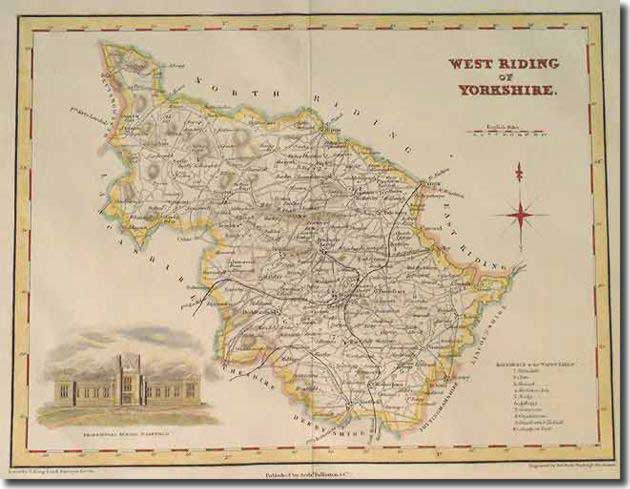 to sport, and in particular Association Football.
to sport, and in particular Association Football.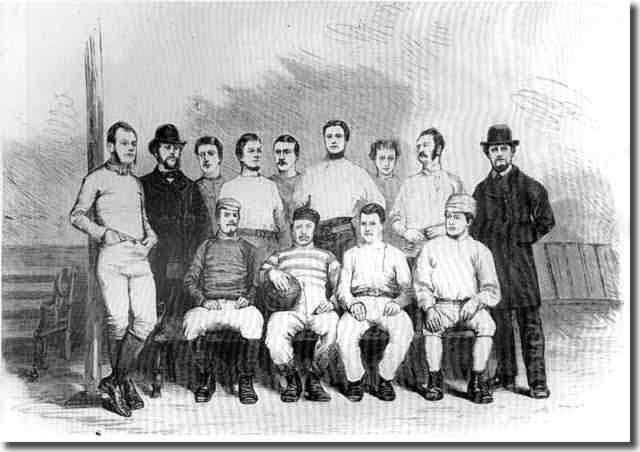 were
responsible for what is generally acknowledged to be the first soccer
match ever played in Leeds in 1877.
were
responsible for what is generally acknowledged to be the first soccer
match ever played in Leeds in 1877.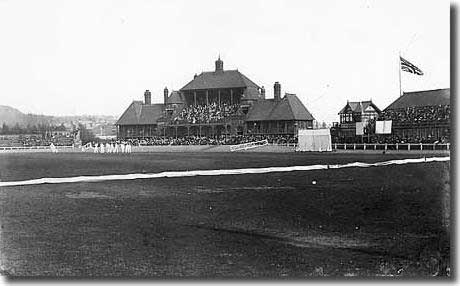 winning
the West Yorkshire Cup four times and reaching the FA Amateur Cup quarter-finals
twice, including one celebrated victory over the mighty Old Etonians,
who had won the Cup in 1879 and 1882, and were runners-up in 1875, 1876,
1881 and 1883.
winning
the West Yorkshire Cup four times and reaching the FA Amateur Cup quarter-finals
twice, including one celebrated victory over the mighty Old Etonians,
who had won the Cup in 1879 and 1882, and were runners-up in 1875, 1876,
1881 and 1883.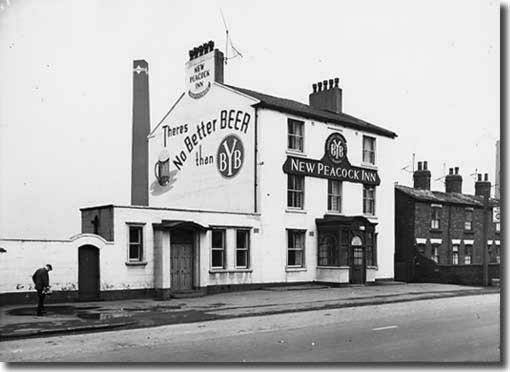 headquarters
and markedly superior facilities was among the main factors that improved
the odds of a football club succeeding in Leeds.
headquarters
and markedly superior facilities was among the main factors that improved
the odds of a football club succeeding in Leeds.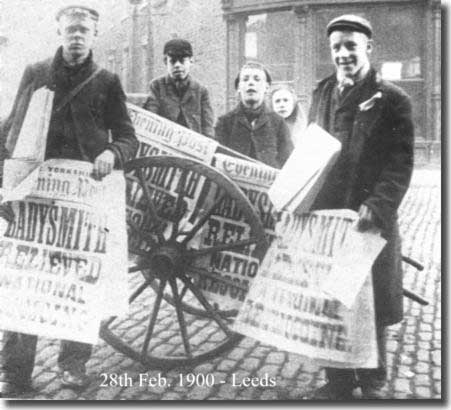 Together
with Ernest Nudger Needham and Rab Howell, he was a member of Sheffield
United's diminutive half-back line who all played for England.
Together
with Ernest Nudger Needham and Rab Howell, he was a member of Sheffield
United's diminutive half-back line who all played for England.